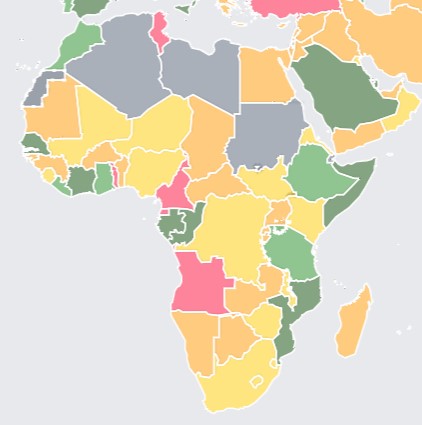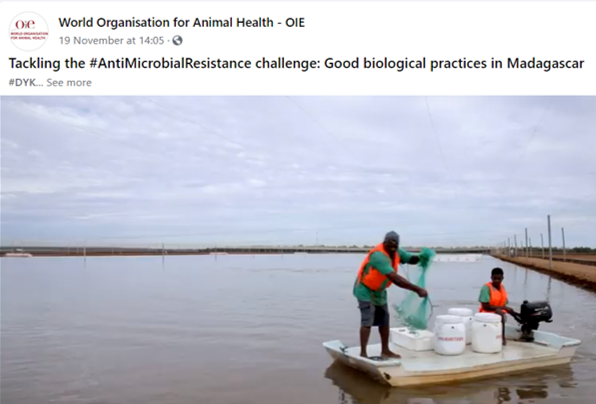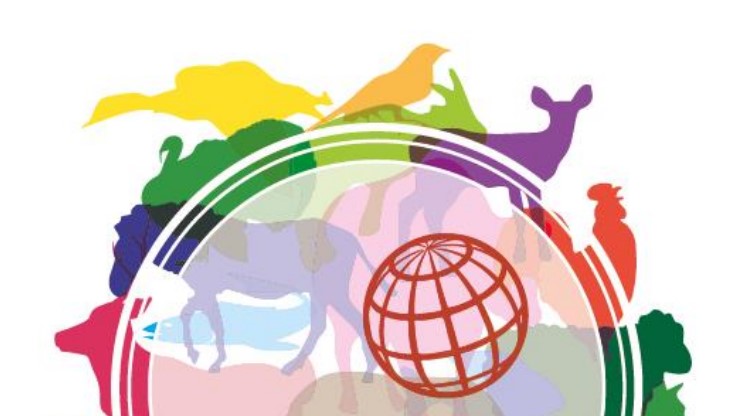
Antimicrobial resistance (AMR) is the ability of microorganisms to resist antimicrobial treatments, especially antibiotics.
Inappropriate antimicrobial use (AMU) is a key factor that leads to the development of AMR. This includes overuse and misuse of antimicrobial agents in humans, animals and plants. As a result, a multisectoral One Health approach is necessary to combat AMR.
WOAH hosts ANIMUSE, an interactive and automated database that allows countries to report, access, analyse and communicate data on antimicrobials intended for use in animals to different stakeholders.
Following the adoption of the World Health Organisation (WHO) AMR Global Action Plan (GAP) in 2015, the Tripartite (FAO, WOAH and WHO) collaborated in developing a manual to support countries in developing their National Action Plans (NAPs) that are aligned with the GAP.
In November 2016, the WOAH Strategy on AMR and the prudent use of antimicrobials was developed and is aligned with the GAP. The strategy was revised in 2020 and recognizes the importance of a “One Health” approach in addressing AMR.
In 2022, the Quadripartite, as leaders in the multilateral system on human, animal, plant and environmental health launched the WHO, FAO, OIE, UNEP Strategic framework for collaboration on AMR. This was a milestone showcasing what they will do jointly to support countries’ efforts to scale up national responses to AMR.
Implementation of AMR NAPs in Africa is currently mostly supported by the Fleming Fund (FF) and the Antimicrobial Resistance Multi-Partner Trust Fund (MPTF) which seeks to combat the threat of antimicrobial drug resistance through strategic collaboration, sustainable streams of capital, and Sustainable Development Goal-focused responses that support localized ‘One Health’ National Action Plans.
Active engagement of the animal health sector is crucial in achieving the one health approach to the fight against AMR.
To this effect, the extra-ordinary Regional Commission for Africa meeting on AMR held during the 2nd WOAH Global Conference on Antimicrobial Resistance and Prudent Use of Antimicrobial Agents in Animals “Putting Standards into Practice” (Marrakesh, Morocco, October 2018) identified communication, laboratory training on disease diagnosis and antimicrobial susceptibility testing, as well as training on risk assessment for AMR, antibiotic stewardship, AMR/AMU data collection and analysis and epidemiology as top priorities.
The WOAH Strategy on Antimicrobial Resistance is aligned with the WHO Global Action Plan and recognizes the importance of a “One Health” approach – involving human and animal health, agricultural and environmental needs. It outlines the goals and tactics we have in place to support Member Countries and to encourage the national ownership and implementation.
WOAH International Standards are available (Terrestrial Code and Terrestrial Manual) to guide member countries on AMR surveillance in animals, Monitoring AMU in food-producing animals, Responsible and prudent use of antimicrobials in veterinary medicine, and Risk analysis for AMR in animals.
The Aquatic Animal Health Code gives guidance controlling antimicrobial resistance Controlling resistance, Responsible and prudent use of antimicrobials in aquatic animals, Monitoring quantities and use of antimicrobials in aquatic animals, AMR surveillance in aquatic animals and Risk analysis for AMR in aquatic animals
PDF - 3.56MB
PDF - 3.51MB
Chapter 6.7.
Introduction to the recommendations for controlling antimicrobial resistance
Chapter 6.8
Harmonisation of national antimicrobial resistance surveillance and monitoring programmes
Chapter 6.9.
Monitoring of the quantities and usage patterns of antimicrobial agents used in food-producing animals
Chapter 6.10
Responsible and prudent use of antimicrobial agents in veterinary medicine
Chapter 6.11.
Risk analysis for antimicrobial resistance arising from the use of antimicrobial agents in animals
Chapter 2.1.1.
Laboratory methodologies for bacterial antimicrobial susceptibility testing
Chapter 6.1.
Introduction to the recommendations for controlling antimicrobial resistance
Chapter 6.2.
Principles for responsible and prudent use of antimicrobial agents in aquatic animals
Chapter 6.3.
Monitoring of the quantities and usage patterns of antimicrobial agents used in aquatic animals
Chapter 6.4.
Development and harmonisation of national antimicrobial resistance surveillance and monitoring programmes for aquatic animals
Chapter 6.5.
Risk analysis for antimicrobial resistance arising from the use of antimicrobial agents in aquatic animals
Karim Tounkara
[email protected]
(Bamako)
Walter Fuller
[email protected]
(Brazzaville)
Laetitia Gahimbare
[email protected]
(Brazzaville)
Niang, Ahmadou Tidiane
[email protected]
(Accra)
Levis Kavagi
[email protected]
(Nairobi)
Karim Tounkara
[email protected]
(Bamako)
Walter Fuller
[email protected]
(Brazzaville)
Niang, Ahmadou Tidiane
[email protected]
(Accra)
Dechassa Mekonta Tegegne
[email protected]
(Gaborone)
Mark Obonyo
[email protected]
(Zimbabwe)
Walter Fuller
[email protected]
(Brazzaville)
Jane Lwoyero
[email protected]
(Nairobi)
Tabitha Kimani
[email protected]
(Nairobi)
Walter Fuller
[email protected]
(Brazzaville)



